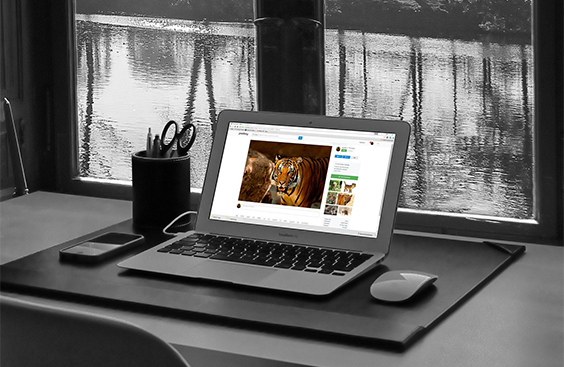How to save screenshots on a Mac: the steps to follow

More and more people are interested in learning how to save screenshots on a Mac, as this skill is essential for capturing and sharing visual information quickly and effectively. Whether you are working on creative projects, solving technical problems or simply want to share interesting content with others, knowing the various methods for
capturing screenshots on your Mac can greatly simplify the process.
In this comprehensive guide, we will explore in detail the different methods of saving screenshots on a Mac. We will also provide you with some useful tips and tricks to make the most of this feature.
That being said, let’s not get lost in the chatter and get to the heart of this article.
How to save screenshots on a Mac: step-by-step guide
In an era where sharing visual information has become increasingly important, the ability to easily capture screenshots on your Mac is really crucial.
Let’s take a look at the individual steps for each of the possible modes.
Capturing the entire screen
Capturing the entire screen is the easiest way to capture a complete screenshot of your Mac desktop. Here’s how to do it:
- Press the ‘Shift + Command + 3‘ keys simultaneously.
- You will notice that a screenshot of the entire screen is created.
- The screenshot file will automatically be saved on the desktop with the name “Screen Shot 2025“.
Capturing a specific window
If you wish to capture only a specific window instead of the entire screen, follow these steps:
- Open the window you wish to capture.
- Press the “Shift + Command + 4 + Space” keys simultaneously.
- You will observe that the mouse cursor turns into a small camera.
- Click on the window you wish to capture.
- A screenshot file of the selected window will automatically be saved on your desktop.
Capture of a specific part of the screen
If you wish to capture only a specific part of your screen, follow these steps:
- Press the ‘Shift + Command + 4’ keys simultaneously.
- The mouse cursor will turn into a cross.
- Drag the cross to select the area of the screen you wish to capture.

- Release the mouse button to create the screenshot of the selected part.
- The screenshot will automatically be saved as a file on the desktop.
Capture of a specific area and copy to clipboard
Sometimes you might want to copy a screenshot directly to the clipboard for use in another application without saving a file. Here is how you can do this:
- Press the ‘Control + Shift + Command + 4‘ keys simultaneously.
- The mouse cursor will turn into a cross.
- Drag the cross to select the area of the screen you wish to capture.
- Release the mouse button to create the screenshot of the selected part.
- The screenshot will be copied to the clipboard instead of being saved as a file.
Adding a blur to a sensitive area
Sometimes you may want to protect the privacy of certain information in the screenshot. You can add a blur to a specific area by following these steps:
- Press the “Shift + Command + 4” keys simultaneously to capture a specific area of the screen.
- Before clicking to select the area, press the space bar and option simultaneously.
- The mouse cursor will turn into a small camera with a magnifying glass icon.
- Click on the window or area you wish to capture, and a blur will be applied to the selected area in the screenshot.
Capture of an entire web page
If you wish to capture the entire page of a website, you can use the ‘Safari’ app and follow these steps:
- Open the web page in the Safari browser.
- Press the ‘Shift + Command + 5′ keys simultaneously to open the screen capture utility.
- Several capture options will be displayed.
- Choose the ‘Capture entire page‘ option (icon with an elongated down arrow) to capture the entire visible web page, including content that requires scrolling.
- You can also select other capture options, such as capturing only a portion of the page or recording a video of the screen.
Additional tips on how to save screenshots on Mac:
Customise the save location: If you want screenshots to be saved in a location other than the desktop, you can change the default settings.
Go to “System Preferences” > “Keyboard” > “Screen Shots” and change the storage location according to your preferences.
Change the file formats of screenshots: Screenshot files are saved in PNG format by default. If you prefer to use a different format such as JPEG, GIF or TIFF, you can change the settings in the ‘Screen Shots’ section of ‘System Preferences’.

Use previews to edit screenshots: If you want to make changes or cropping to screenshots before saving them, you can open screenshot files using the ‘Preview’ app on your Mac. This allows you to make quick changes such as annotations, cropping, colour adjustments and more.
How to save screenshots on a Mac: Conclusion
Knowing how to save screenshots on a Mac is an essential skill for capturing, sharing and using visual information effectively. With the various methods and tricks provided in this guide, You are now able to capture screenshots of the entire screen, specific windows or selected areas, customise save settings and use advanced options such as adding blurs or recording entire web pages.
Remember to explore the system preferences to further customise your screenshot capturing experience.
Regardless of why you need to capture screenshots on a Mac, this comprehensive guide has provided you with all the necessary steps to do so quickly and easily.
Also remember to take advantage of the additional tips provided to optimise the screenshot saving process.
Learning how to save screenshots on Mac will make you more efficient at sharing visual information, solving problems, or simply capturing interesting moments on your desktop.
Take advantage of this built-in functionality on your Mac and enjoy the ease and convenience of capturing screenshots with a few simple steps.
We hope you found this comprehensive guide on how to save screenshots on a Mac useful. Be creative, explore the different options and enjoy the experience of capturing screenshots on your Mac.
Enjoy capturing!

